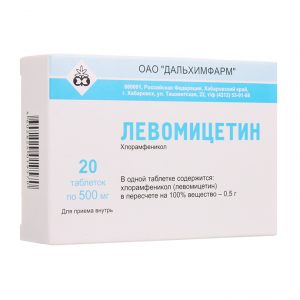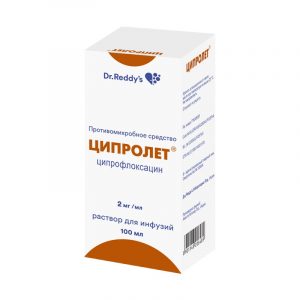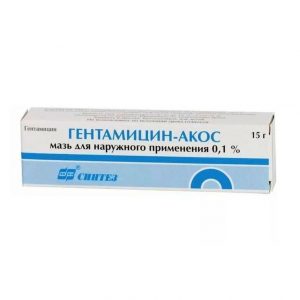Description
Release form
Powder for oral suspension, 50 mg azithromycin.
4.2 g (50 mg azithromycin) in heat-sealable single-dose bags made of a combined multilayer material based on foil, buffered paper or packaging paper with a polyethylene coating.
Packing: 3 bags with instructions for use are placed in a pack of cardboard.
Indications
Infectious and inflammatory diseases, caused by drug-sensitive microorganisms:
– infections of the upper respiratory tract and ENT organs (tonsillitis, sinusitis, tonsillitis, pharyngitis, otitis media)
– scarlet fever
– infections of the lower respiratory tract (bacterial, including those caused by atypical pathogens pneumonia, exacerbation of chronic pneumonia, bronchitis)
– infections of the skin and soft tissues (erysipelas, impetigo, secondarily infected dermatoses)
– urinary tract infections (gonorrheic and non-chronic urethritis)
– infections of the female genital organs Ghana (cervicitis)
– Lyme disease (borreliosis) in the initial stage (erythema migrans)
– diseases of the stomach and duodenum associated with Helicobacter pylori (as part of combination therapy).
Contraindications
Hypersensitivity (including to other macrolides), severe impairment of liver and / or kidney function,age up to 16 years (infusion), up to 12 years old with body weight less than 45 kg (capsules, tablets), up to 6 months (suspension for oral administration).
Use during pregnancy and lactation
During pregnancy, it is possible if the expected effect of therapy exceeds the potential risk to the fetus.
FDA category of effect on the fetus is B.
Breastfeeding should be discontinued during treatment.
Composition
Active ingredient: azithromycin dihydrate in terms of azithromycin – 50 mg.
Excipients: sodium citrate (sodium citric acid trisubstituted), food orange flavor, sodium saccharin (soluble saccharin), collidone CL-M (crospovidone), sugar (sucrose).
Dosage and administration
The drug is taken orally 1 time / day 1 hour before or 2 hours after eating.
Adults
For infections of the upper and lower respiratory tract, 500 mg / day is prescribed for 3 days (course dose – 1.5 g).
For infections of the skin and soft tissues, 1 g / day is prescribed on the 1st day, then 500 mg daily from the 2nd to the 5th day (course dose – 3 g).
For uncomplicated urethritis and / or cervicitis, a single dose of 1 g is prescribed.
For Lyme disease (borreliosis), 1 g is prescribed for the initial stage (erythema migrans) on the 1st day and 500 mg daily from the 2nd to the 5th day (course dose – 3 g).
For gastric and duodenal ulcer associated with Helicobacter pylori, 1 g / day is prescribed for 3 days as part of combination anti-Helicobacter therapy.
Children
The capsule preparation is prescribed for children over 3 years old and / or with a body weight of more than 25 kg for infections of the upper and lower respiratory tract, skin and soft tissues at the rate of 10 mg / kg of body weight 1 time / day for 3 days (course dose – 30 mg / kg), or on the 1st day – 10 mg / kg, then for 4 days – 5-10 mg / kg / day.
In the treatment of the initial stage (erythema migrans) of Lyme disease (borreliosis), the drug is prescribed at a dose of 20 mg / kg on the 1st day, then 10 mg / kg from the 2nd to the 5th day.
The drug in the form of a suspension for oral administration is prescribed for children over 6 months of age with infections of the upper and lower respiratory tract, skin and soft tissues at the rate of 10 mg / kg body weight 1 time / day for 3 days (course dose – 30 mg / kg ), or within 5 days: on the 1st day – 10 mg / kg, then within 4 days – 5-10 mg / kg / day.
Recommended doses of the drug depending on the body weight of the child are presented in the table.
Body weight Average daily (single) dose
Powder for suspension 100 mg / 5 ml
5 kg 2.5 ml (50 mg)
6 kg3 ml (60 mg)
7 kg 3.5 ml (70 mg)
8 kg4 ml ( 80 mg)
9 kg 4.5 ml (90 mg)
10-14 kg 5 ml (100 mg)
Powder for suspension 200 mg / 5 ml
15-24 kg 5 ml (200 mg)
25-34 kg 7.5 ml (300 mg)
35-44 kg 10 ml (400 mg)
> 45 kg prescribed doses for adults (500-1000 mg)
In the treatment of the initial stage (erythema migrans) Lyme disease (borreliosis), the drug is prescribed at a dose of 20 mg / kg on the 1st day, then 10 mg / kg from the 2nd to the 5th day.
Side effects
From the nervous system and sensory organs: dizziness, vertigo, headache, paresthesia, agitation, increased fatigue, drowsiness rarely – tinnitus, reversible hearing loss up to deafness (when taken in high doses for a long time) in children – headache (with treatment of otitis media), hyperkinesia, nervousness, anxiety, sleep disturbance, conjunctivitis.
From the cardiovascular system and blood (hematopoiesis, hemostasis): chest pain, palpitations.
From the digestive tract: nausea, vomiting, diarrhea, flatulence, abdominal pain, increased activity of ALT and AST, bilirubin level, cholestasis, jaundice rarely – constipation, discoloration of the tongue, pseudomembranous colitis, pancreatitis, liver necrosis, liver failure (possibly with fatal outcome) in children – decreased appetite, gastritis, candidomycosis of the oral mucosa.
From the genitourinary system: vaginal candidiasis, nephritis.
Allergic reactions: rash, itching, urticaria rarely – angioedema, anaphylactic shock.
Other: photosensitization, eosinophilia, transient neutrophilia with iv administration (optional) – bronchospasm, pain and inflammation at the injection site.
Drug Interactions
With the simultaneous use of antacids (aluminum and magnesium), ethanol and food slow down and reduce the absorption of azithromycin.
When combined with the use of azithromycin in therapeutic doses with warfarin, no change in prothrombin time was noted, however, given that the interaction of macrolides with warfarin may increase the anticoagulant effect, careful administration of prothrombin time is necessary when this combination is prescribed.
With simultaneous use, the concentration of digoxin in the blood plasma increases.
With simultaneous use, the toxic effect (vasospasm, dysesthesia) of ergotamine and dihydroergotamine is enhanced.
With simultaneous use, clearance is reduced and the pharmacological effect of triazolam is enhanced.
Azithromycin inhibits microsomal oxidation in hepatocytes, which leads to slower elimination and increase in plasma concentrations and toxicity of cycloserine, indirect anticoagulants, methylprednisolone, felodipine, as well as drugs subjected to microsomal oxidation (carbamazepine, terfenadine, cyclosporine, hexobarbital, ergot alkaloids, valproic acid, disopyramide, bromocriptine, phenytoin, oral hypoglycemic drugs, xyltin derivatives, etc.).
Lincosamines reduce the effectiveness of azithromycin.
Tetracycline and chloramphenicol enhance the effectiveness of azithromycin.
Overdose
Symptoms: nausea, temporary hearing loss, vomiting, diarrhea.
Treatment: gastric lavage, symptomatic therapy.
Storage conditions
In a dry, dark place at a temperature of 15 25 ° C.
Term hodnosty
2 years
Deystvuyuschee substances
Azithromycin
Conditions of supply of pharmacies
prescription
Form of Treatment
suspension dlya accepts vnutry
Possible product names
AzitRus por.d / susp. 50mg pack 4.2g 3pcs



